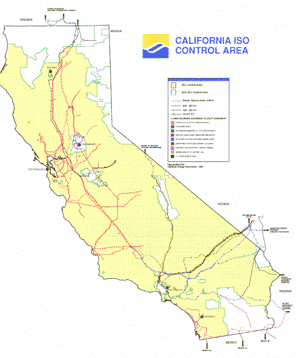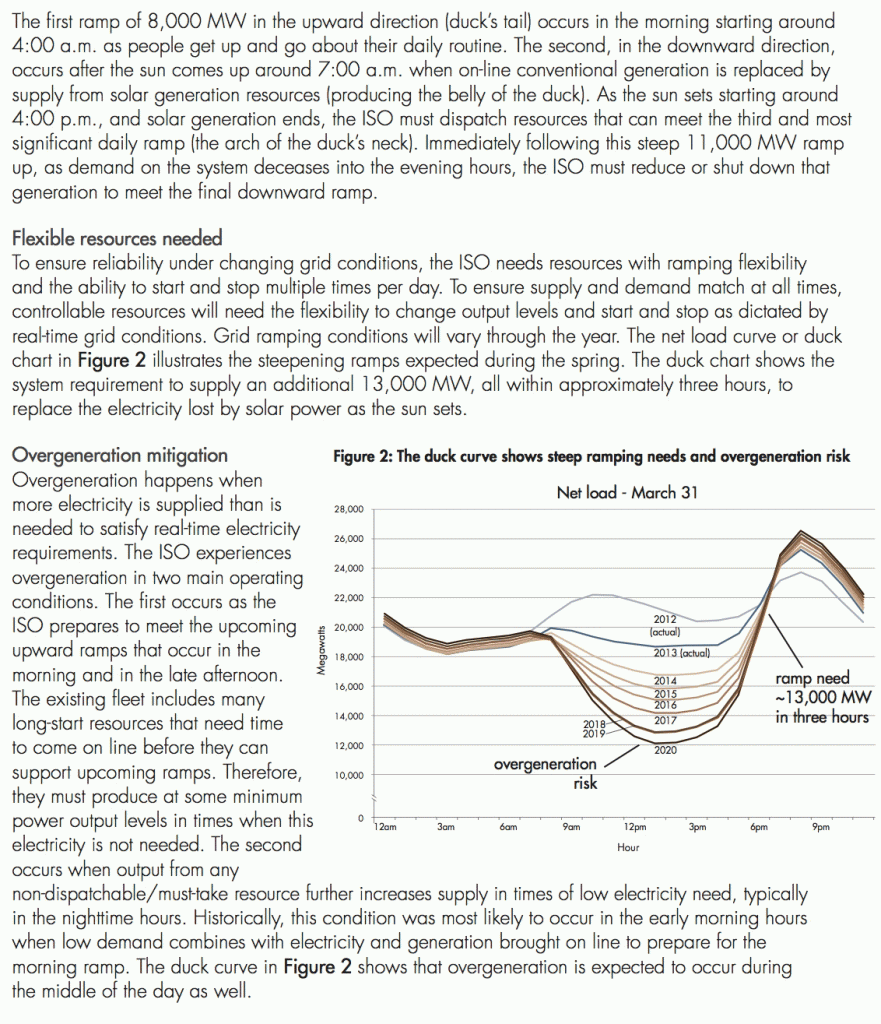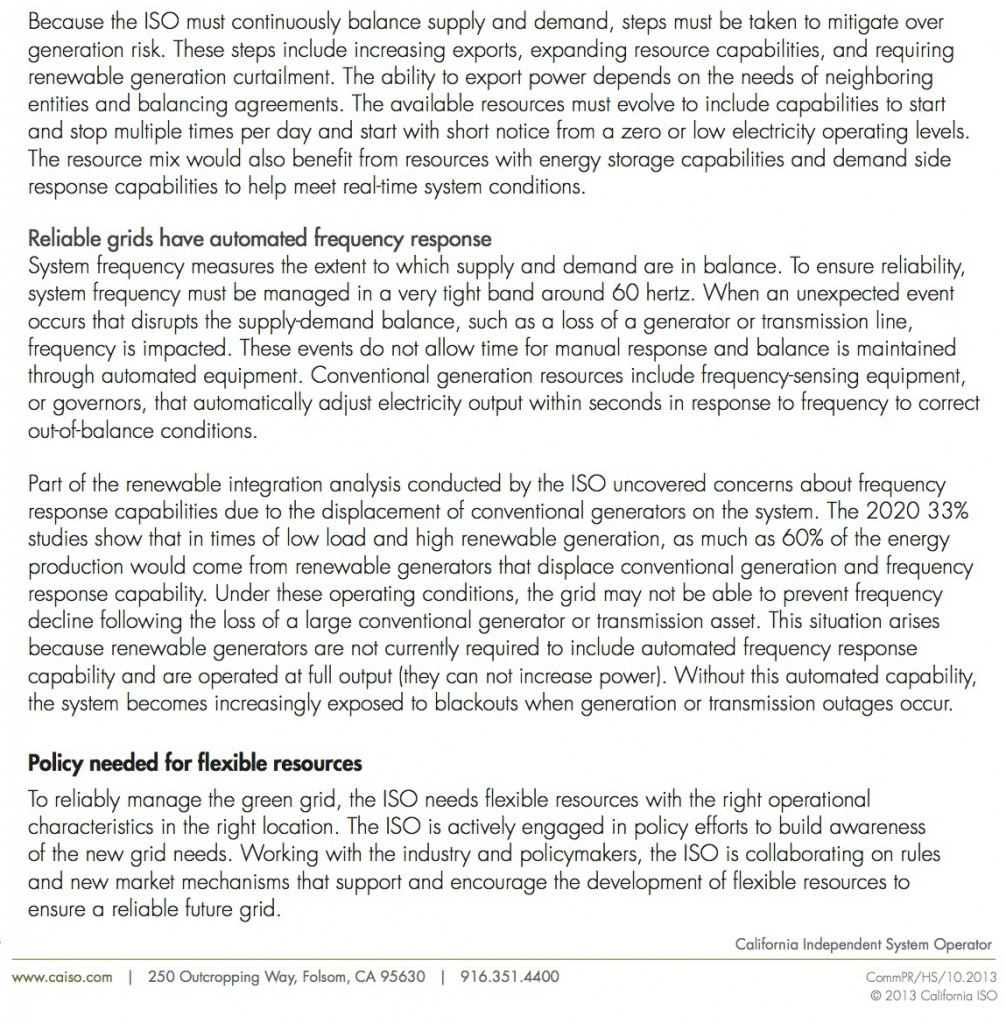by Matt Williams
In his article on Friday, Mark Braly ended with the following paragraph.
The Davis municipal utility is in an exploratory stage now. When and how the city seizes the opportunity to make its energy future cleaner and more profitable is under study. Local groups, such as the Valley Climate Action Center and the Coalition for Local Power, are urging that the city tap its abundance of local energy experts to move the study forward. Stay tuned and keep and an open mind.
In light of the comments that Mark’s article generated, I thought it might be useful to look at some of the factors that are actively in play in the California electrical market through the lens of the California Independent System Operator (more commonly referred to as the California ISO, CAL-ISO or “the ISO” for short), which provides open and non-discriminatory access  for electricity producers and electricity providers to the bulk of the state’s wholesale transmission grid.
for electricity producers and electricity providers to the bulk of the state’s wholesale transmission grid.
That electricity producer market stretches from British Columbia in the north to Northern Mexico in the south and as the graphic to the right shows, the CAL-ISO electricity provider market covers over 70% of California. In addition, CAL-ISO supports the grid and the market with comprehensive infrastructure planning efforts.
Recent technology trends point to a larger reliance on Demand Response and Energy Efficiency (DR/EE) as well as other forms of distributed energy resources such as microgrids, rooftop solar, electric vehicles as well as energy and thermal storage facilities. The ISO is working with the California Public Utilities Commission (CPUC) and the California Energy Commission (CEC) to create a market for Demand Response and Energy Efficiency that builds upon the innovation that has characterized the state as a national leader of clean energy technology advancement.
A greater reliance upon DR/EE brings new complexities to transmission planning and real-time grid and market operations. The ISO is committed to harmonizing the unique attributes that come from clean, green resources into its market in a way that fully optimizes the benefits of Demand Response and Energy Efficiency resources.
As the California electricity market evolves, the ISO envisions DR/EE becoming integral, dependable and predictable resources that support a reliable, environmentally sustainable electric power system. Energy efficiency and demand response have a long history in California and are already contributing to lower costs and reduced environmental impacts. Utility demand response programs developed over a decade ago have offset the need for additional peaking generation. Implementing new, more flexible and responsive resources will further advance California’s goals of a more reliable and cleaner power system—with the added potential of replacing or deferring investments in more expensive energy infrastructure.
The following is one of the ISO’s recent planning documents that is particularly germane to our discussions about our power future here in Davis.
CAL-ISO has given the Vanguard permission to reprint any and all of their planning documents in their entirety, and we will be taking them up on that offer. If you want to read more you can access their website at http://www.caiso.com/about/Pages/default.aspx If you want to know more about the duck curve http://www.caiso.com/Documents/DR-EERoadmap.pdf and/or planning at the ISO http://www.caiso.com/planning/Pages/default.aspx click on the links provided.










matt – so how does this impact the feasibility of a pou?
I see it impacting the feasibility of a POU in a number of ways. First, as is noted the entire grid is feeling the impact of renewables. PG&E and Southern California Edison are wedded to existing capital structures and revenue streams that are going to push them more and more into the role of being high cost distribution networks, and as The ISO analysis points out the cost of electricity during the 9am to 4 pm time period is going to plummet as more and more solar is used to satisfy the demand during those hours. As automobile battery technology continues to advance, electric cars that are effectively charged at a marginal cost of close to $0.00 per kWH will become the electricity source for the residence when the car owner gets home. This will put large, capital intense providers like PG&E at an ever increasing fiscal disadvantage, and they will have no choice other than to recoup their costs through higher and higher rates for their customers.
A POU will not be saddled with either the capital ammortization costs of a huge network or the liability risk of related businesses (e.g. natural gas delivery in compromised distribution infrastructure like San Bruno’s). Does all of that guarantee the POU’s success? Definitely not. Does it put the POU in a position where it can be much more nimble as the market changes outlined in the CAL-ISO report continue to evolve … quite possibly. The proof will be in the pudding.
“POU in a position where it can be much more nimble”
City of Davis…nimble? Yeah, not so much. We seem to already be stuck in the pudding…or is that pou?
It seems rather foolish to buy the PG&E local distribution network just as solar and battery technology means that users can go off the grid. At best it’s a highly risky speculation.